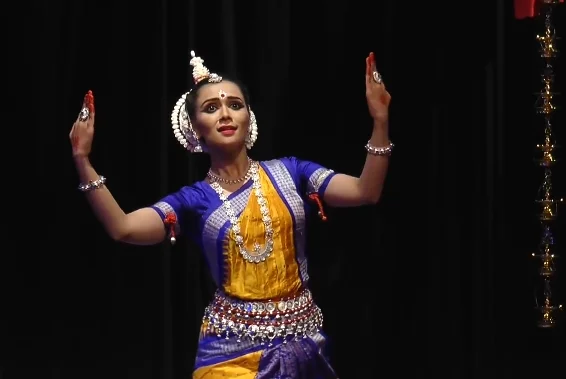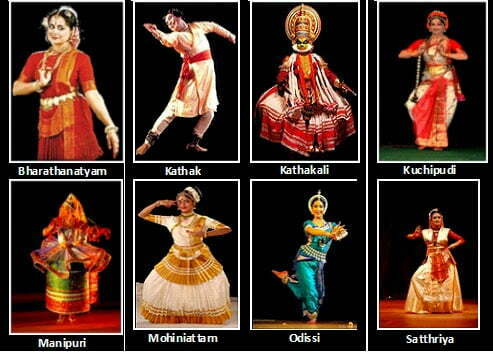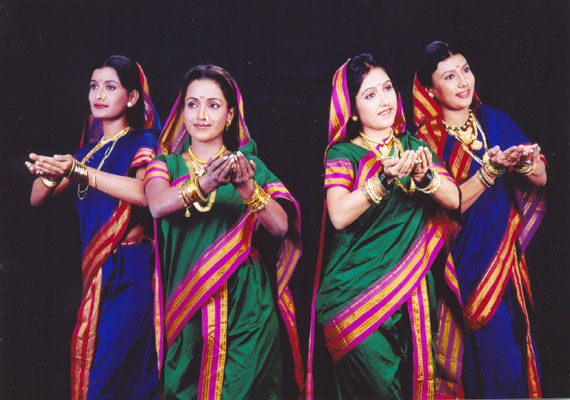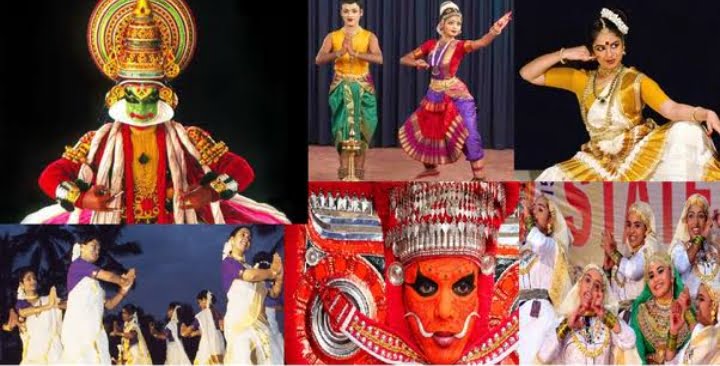Odisha, in eastern India, has a vibrant dance and music heritage that is a delight for all arts and culture lovers. Odissi music combines all the primary components of Carnatic and Hindustani music, such as talas and ragas, into a single genre. As a result, the state’s social landscape has a wide range of hues. Each of these plays an important role in shaping the state’s performing arts. Odisha’s dances are awe-inspiring and visually pleasing. Furthermore, the heartfelt cadenced foot-tapping song completely absorbs your senses and emotions. Odissi Dance is an example of such a form. It is Odisha’s traditional dancing form.
- What Is Odissi Dance?
- Origin of Odissi Dance
- Evolution of Odissi Dance
- Odissi Dance Forms
- Odissi Dance Costumes
- Ornaments And Makeup
- Basic Moves and Mudras of Odissi
- Odissi Dance Sequences
- Various Styles Of Odissi
- Music and Instrument of Odissi Dance
- What Makes The Dancing Form Unique?
- Famous Faces Of Odissi Dance
- Global Recognition
- Final Thoughts
- FAQ Section
What Is Odissi Dance?
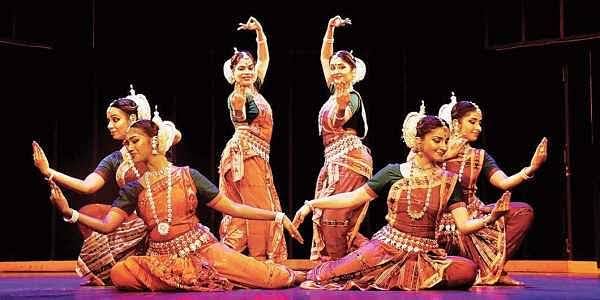
Odissi, often spelled Orissi, is a traditional Indian dance form that evolved in the Hindu temples of Odisha’s eastern coast. Moreover, the ancient Sanskrit Hindu text ‘Natya Shastra,’ which deals with the performing arts, has its theoretical foundations. In Odisha, one can find Hindu temples and other historical sites related to Hinduism, Jainism, and Buddhism. One can find Odissi’s rich history in the sculptures that embellish the dancing positions in this art form.
In fact, invocation, nrita, nritya, natya, and moksha are instances of instructional narratives, devotional poetry, and spiritual conceptions. Dancers emoted them through incredible body movements, emotions, wonderful gestures, and sign language.
Simultaneously, this dance form portrays Vaishnavism and other Hindu gods and goddesses. To maintain Odisha’s unique identity, renowned Odia poet Kabichandra Kalicharan Pattanayak preceded classical music and dance with “Odissi. He was at the forefront of the state’s cultural renaissance following the independence. This dance form consists of head, bust, and torso motions, as well as complementing gestures and attitudes.
It is also accompanied by lovely gestures and deft motions, punctuated by brief moments of silence. Thus, from grief to pleasure, sensual to wrath, pride to devotion, and intellectual to religious, there is a broad depiction of a range of emotions.
Origin of Odissi Dance
Odissi is the earliest style of Indian classical dance. It has its roots in the Ram Gumpa caves in Udaygiri, Odisha, dating back to the 2nd century. Two dance traditions, the Gotipua and the Maharis, have impacted this dancing style. The Maharis devoted their entire lives to Lord Jagannath’s devotion. They performed in the temples and the Gotipua. Young boys dressed in female attire brought this form out in public.
Odissi dancers frequently claim that their form is the earliest of Indian classical dances, citing the Natyashastra as proof. The Odra-Magadhi style of dance, mentioned in this literature, lays the theoretical underpinning for all ancient Indian performing arts. For instance, many scholars consider it to be a precursor of twentieth-century Odissi.
In addition to this, archaeological evidence uncovered in and around Bhubaneswar supports these beliefs. As a result, there is no question that this dance form has been in these regions since time immemorial.
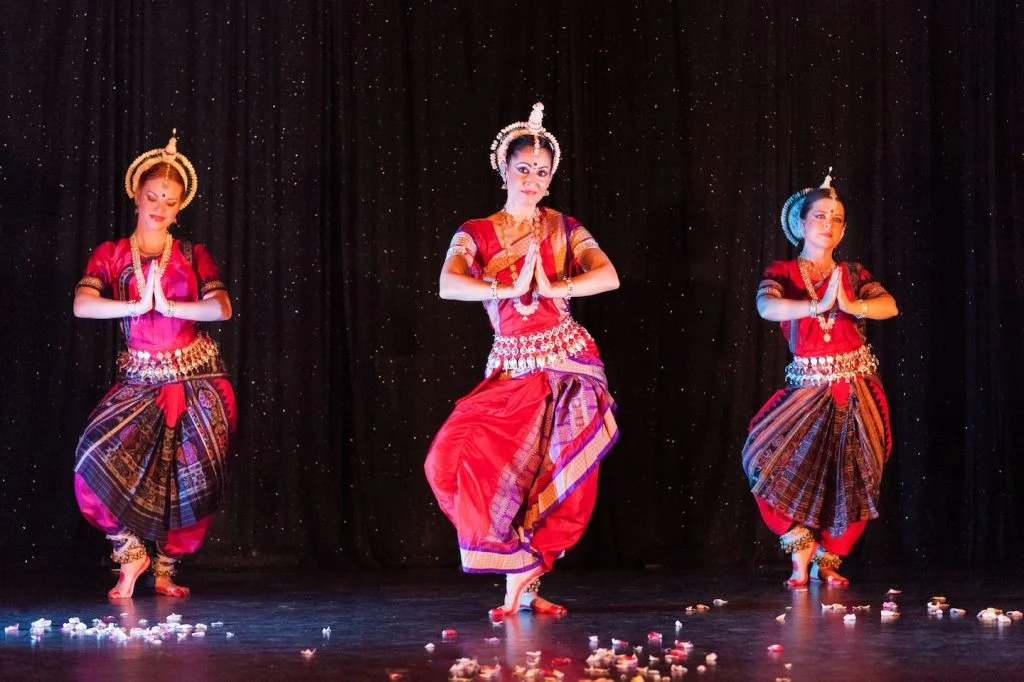
Evolution of Odissi Dance
Odissi has progressed significantly since its inception half a century ago. What we now refer to as Odissi, bears little relation to Mahari. This was once played in temples and by Akhada Pilla in Mathas. The dance works that make up the current repertory are all from the previous 50 years. Furthermore, one can understand the motives behind its creation. These were that of a secular ambiance in mind, similar to that of a proscenium theatrical play.
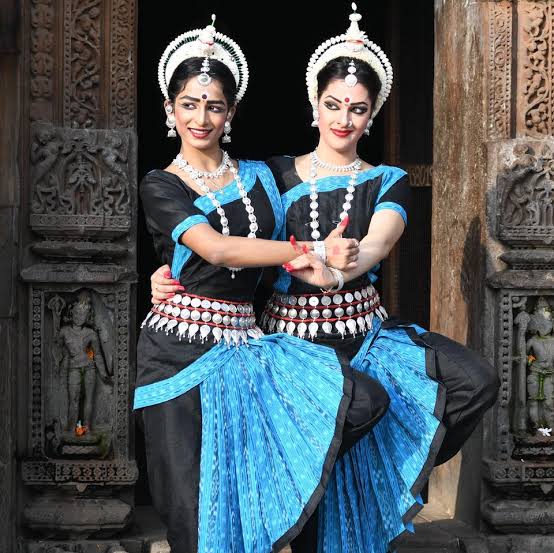
The current practitioners’ originality and variety are responsible for the style’s significant growth in terms of technique and dance compositions. As a result, the increase in the variety of the repertoire is due to the desire to be innovative. The needs of a diversified public, as well as the ever-increasing rivalry among the artists, have a significant impact on its progress.
Looking Through The Scriptures
You can find Odissi in sculptures and panel reliefs from the 10th to 14th centuries. This also includes Puri’s famous Jagannath temple. Other nearby monuments with dancer and musician statues are the Brahmeswara Temple in Bhubaneswar and the Sun Temple in Konark.
Mahris danced at temples and enacted spiritual poems and religious dramas. The 8th century Shankaracharya’s compositions and the 12th century Sanskrit poet Jayadeva’s epic poem “Gita Govinda” have a great influence on Odissi. They have affected the direction and development of modern-day Odissi to a large extent.
Moreover, historians also indicate that dancers from Andhra Pradesh and Gujarat performed in Puri. As a result, proving that the west and east were in contact.
During The Mughal Dynasty’s Reign
During the Sultanate and Mughal ages, temple dancers travelled to India to entertain the Sultan’s family.
After the 12th century, Mughal armies destroyed Odisha’s temples and monasteries, as well as other institutions in the eastern Indian subcontinent. These attacks not only resulted in the looting of these historic sites but also damaged the growth of all creative forms and the freedom of artists.
During this time, art forms collapsed. What remained, notably as royal entertainments, was only possible thanks to the patronage of a few affluent monarchs. Furthermore, temple dancers entertained the Sultans’ families and courts throughout the Mughal and Sultanate periods.
Expansion Of Odissi During 17th Century
According to Alexandra Carter Odissi flourished further in the 17th century, with the patronage of King Ramachandradeva. Traditionally performed by women, this dance style was now learned by boys and children along with sports and Akhanda (martial arts).
As a result of this growth, Odissi’s Gotipuas boys and youths have had the chance to train and prepare for military service against foreign invasions from an early age. According to Ragini Devi in historical archives, the Raja of Khurda fostered the gotipuas tradition in the 14th century
During British Rule
The advent of colonial control in the 18th century followed the establishment of British colonial rule in the 19th century. As a result of these changes, various traditional dance genres became vulnerable to mockery and discouragement. Finally, the social and economic problems linked with Devadasi culture later combined with Christian missionaries’ and British authorities’ scorn and vile attitude impacted this dance form.
Furthermore, in 1892, Christian missionaries started an anti-dance crusade to put an end to the activity. In 1910, the British colonial authorities of the Madras Presidency outlawed the practise of dancing in Hindu temples. The dancers were not only humiliated, but they were also financially harmed by clients who were pressured to stop supporting them.
Odissi’s Resurrection
The Indian community objected to the prohibition that was imposed. As the Indian independence movement proceeded steadily in the early twentieth century, a significant push to revitalize Indian culture and heritage grew among Indians.

As a result, many classical art revivalists teamed up to bring ancient classical dance traditions like Odissi back to life. Kavichandra Kalicharan Pattanayak, an Oriya poet, researcher, and dramatist, is one such revivalist. He holds the credit of not only reviving the dance genre but also dubbing it “Odissi.”
Odissi Dance Forms
The following forms of Odissi became the most extensively practised among Odissi dancers from the 1960s onwards-
- Mangalacharan
- Sthhai or Batu,
- Pallavi,
- Abhinaya, and
- Moksha,
These dance compositions, which range in length from 5 to 15 minutes, include elements of Odissi’s diverse heritage.
Mangalacharan
Mangalacharan, an expressive composition expressing supplication to Lord Jagannath, Lord Ganesh, and other deities. Traditionally, it is performed at the start of an Odissi performance.

In this piece, the dancer seeks the blessings of the Gods, Gurus, and the audience’s best wishes for a prosperous start. Check out this beautiful Mangalacharan performance, here.
The Mangalacharan includes the following parts in the dance:
- Mancha pravesha- In this part, the dancer enters the stage in the rhythm of the tala/bol (beats). He/she carries the flower offerings with both palms joined together.
- Pushpanjali- The dancer offers flowers to the deity, as a mark of devotion and surrender to the deity.
- Bhumi pranama- Paying respect to the holy mother earth, for letting us step on her and perform the dances. It involves slowly going down sitting on the tows, with both knees to the respective sides and touching the earth and taking the blessings following slowly rising up while making a namaskara simultaneously.
- Vandana- Prayer to the deity
- Sabha pranam- comprising the jagran nritya along with trikhandi pranam. Here, the sabha involves the god, teachers and rasika. In the last part, we pay our pranam to this Sabha.
Battu
Batu nritta, or the abstract form of pure dance, is known for its durability, permanence, and steadiness. With bhangis i.e. postures, belis i.e. motion, arasas i.e. short dance phrases, ukutas i.e. rhythmic phrases, and a repetitive melodic refrain, it provides the basic physical grammar of the dance drawn from sculptures and gotipua movements.

This is a pure gift of dance to Lord Batuka Bhairava, one of Lord Shiva’s numerous incarnations. The sculptural stances of Batu Nrutya are well-known. There are thorough unusual rhythmic patterns in various portions of this dance. It requires being in the position of Chauka throughout, apart from Pallavis which requires the posture of Tribhanga. Endurance is the main key to Battu nritta with the steps to be sharp, clear, and precise.
Pallavi
Pallavi begins with slow, graceful, lyrical eye, neck, body, and foot movement, gradually building to a crescendo. It culminates in a quick speed at the finale. The dance item’s name is always based on the Raga of the accompanying song. Desh Pallavi, for example, is performed with Desh Raag. Basanta Pallavi, which is the most basic Pallavi taught first in the line of Pallavis, is from the Basanta Raaga, and Hansadhwani Pallavi with Hamsadhwani Raga.

The word ‘pallav’ means elaboration. Hence, Pallavi is another pure dance piece with lyrical grace moves. It builds around a smooth, lyrical, and beautiful tune (Raga). Beautiful dance passages run parallel to sung music’s rhythmic syllables. Pallavi is also pure dance and suggests elaboration. For instance, it is an exhibition of both the dance and the music that accompanies it.
A fast-paced pure dance routine accompanied by a recital of rhythmic phrases played on the Mardala (the main percussion instrument in Odissi). In other words, Pallavi is a pure dance item in which a raga elaborates itself through eye movements, body postures, and intricate footwork.
Abhinaya
Abhinaya is an expressive dance that enacts a song or poem. Therefore, it tells a tale to the audience using mudras, bhavas, eye motions, and body movements.
The choreography is flowing, beautiful, as well as seductive. While performing an Abhinaya, the artist connects with the flow of the devotion and emotion depicted through the song. The artists perform Abhinaya on verses written in Sanskrit or Odia. Abhinayas on Sanskrit Ashtapadi or Sanskrit Stutis like Dasavatara or Ardhanari stotram are the most prevalent.
Abhinaya is the most important component of an Odissi performance, and it usually consists of longer dance pieces with complex theatrical emotions. Sanskrit and Odia literatures are interpreted through dance in abhinaya, which means to carry forward the dramatic portrayal for the stage. For example, Gitagovinda, and the poetries by Odia Bhakti poets like Upendra Bhanja, Banamali Das, Baladev Rath, belonging to the 16th century which are performed as dance-dramas through expressions in abhinayas.
Hence, unlike battu and Pallavi where it is mostly the bol, abhinaya tells you a story involving musical songs and lyrics. The story-telling evolves through various scenes from the epics. For instance, the Mahabharata, Lord Jagannath, Ramayan, and a lot more.
Moksha
All human efforts, according to Indian philosophy, tend toward ‘Moksha,’ which means salvation (liberation). Moksha is a pure ecstatic dance that liberates the dancer towards this aim. This is a fast-paced rhythmic dance that brings the show to a close. The final piece of a recital is moksha. Moksha is the Sanskrit word for spiritual emancipation. For the dancer, who soars into the region of pure aesthetic joy, the dance signifies a spiritual conclusion.

Firstly, movements and stances combine to form a constantly changing pattern and design in space and time. Secondly, the dance builds to an exciting peak for both the eyes and ears. Lastly, it melts into nothingness with the cosmic sound of the ‘OM,’. Therefore, it depicts Moksha, or soul release.
The Moksha, thereafter ends with enactment of the universal prayers/ peace mantras like sarve bhavantu sukhinaha or sarva mangala mangalye.
Odissi Dance Costumes
The expression through costume, makeup, and ornaments refer to Aharya in the Indian classical texts. The dancers wear traditionally woven Patta silk sarees adorned with silver filigree ornaments and pith flowers. The Maharis that danced in the temples wore black velvet bodices with the saree wrapped from the waist down. When Odissi began to be presented on the stage, the saree was first wrapped as a dhoti to form pants with the pallu spread in the front. Over the years, various artists have incorporated several variations.
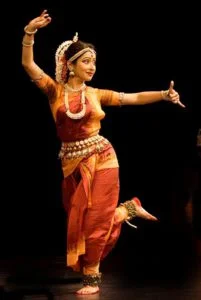
Female dancers wear brightly coloured saris, such as the Bomkai and Sambalpuri saris. These are manufactured from native silk and embroidered with traditional and regional themes. The embroidered part on the front of the sari is called pleats. A pleated material is sometimes used separately. This allows the dancer to move around freely while still demonstrating excellent footwork.

A male dancer wears a dhoti that is elegantly pleated in the front and tucked between his legs, covering his lower body from waist to thighs but leaving his upper body visible. He wraps a belt around his waist as well.
To accentuate the lines and curves in the stance, some dancers nowadays choose not to wear the Odhani (the cloth draped across the shirt to hide the chest). For this reason, the removal of the Odhani from the costume has sparked debate.
Many argue that it places too much emphasis on the body, stressing the physicality of the form rather than the nuance of expression. This and other novel ways of moving may have an influence on the main goal of influencing the audience through subtle movement and emotion.
Ornaments And Makeup
Dancers wear silver jewellery on the head, ears, neck, arms, and wrists. They wear Ghunghru, or melodious anklets around their ankles which are made of leather straps with little metallic bells attached. In addition to this, a detailed belt is fastened around the dancers’ waists.

Dancers use Alta dyes to make the feet and palms prominent. They wear a tikka on their forehead and draw emphasis to their eyes with Kajal. To style hair in a bun dancers use Seenthi. The hairstyle is adorned with a moon-shaped crest of white flowers. It also has a Mukoot, which is a reed crown with peacock feathers symbolizing Lord Krishna.
Basic Moves and Mudras of Odissi
Odissi is traditionally a dance-drama genre in the performing arts. The artists and the musicians play out a mythical story from the Ramayan and the Mahabharata, or a devotional poem or a spiritual message. This depiction includes various expressions called Abhinaya, body movements, and mudras. Odissi performance is a fusion of basic units called Bhangas. It has eight Belis, or body movements. These combine in many varieties, including footwork, torso movement synced with hand and head movements with geometric symmetry and musical resonance.
According to the classical texts, each movement or gait represents certain emotions. Therefore, excitement is presented at a quick pace, and a slow, confused pace symbolises dejection. Sambhanga, Abhanga, and Tribhanga are the three basic Odissi moves. According to classical literature, hand gestures, or mudras, are used in stories to portray emotions, moods, and sensations. Furthermore, the Abhinaya Chandrika has 63 mudras, which nearly match those in the Pan-Indian scriptures.
Odissi Dance Sequences

The sequences begin with the invocation called Manglacharana. It is a hymn praising Lord Jagannath, an avatar of Vishnu. Then there is Pushpanjali, which is the flower-giving, and Bhumi Pranam, which is the salutation. This commonly refers to the salutation to Mother Earth. The invocation includes a three-fold salutation, known as Trikhandi Pranam in the classical texts. It is a salutation to the gods, to the guru, and the audience.
Battu is next in the series. Batuk Bhairava is the other name for it. It’s an incredibly fast dance in Lord Shiva’s honour. The dancer performs to the a-c beats of the musical instruments. There is no recitation of any song or poem in this segment of the performance. This is followed by a pallavi. It often has slow, graceful, and lyrical movements of the eyes, neck, torso, and feet.
The next section is Nritya. It includes expressional dance, or Abhinaya, which uses hand gestures or mudras, emotions or bhavas, and eye and body movements to tell a tale, song, or poetry. The next section, natya, features a dance play based on Hindu mythical scriptures and epics. Finally, the dance step, Moksha is performed towards the end of an Odissi performance which conveys a sense of spiritual freedom.
Various Styles Of Odissi
Traditional Odissi has two major styles; the first, Mahari, and the second, Gotipua. Women practice Mahari which focuses on solemn and spiritual dance in temples. The second is mastered by boys dressed up as women. This includes athletic and acrobatic moves, performed at temples on festive occasions for the general public.
Additionally, modern Odissi has presented a lot of experimental ideas and cultural fusions of themes and plays.
Music and Instrument of Odissi Dance
The music that accompanies Odissi is largely the same as Odissa’s own music. However, there are numerous perspectives on how Odissi music is linked to music from the rest of India. Although most people consider Odissi to be merely another type of Hindustani sangeet, others believe it should be a different classical system.

Odissi music is the classical music of the state of Odisha. The classical dance of Odisha accompanies this music. The primary ragas in the music are Kalayana, Nata, Shree, Gowda, Baradi, Panchama, Dhanarashi, Karnata, Bhairavee, and Shokabaradi. Ragini is the visualisation of music, integrated by the musicians and interpreted by the dancer. The orchestra consists of regional instruments such as the Mardala (barrel drum), the harmonium, flute, sitar, violin, and cymbals.
What Makes The Dancing Form Unique?
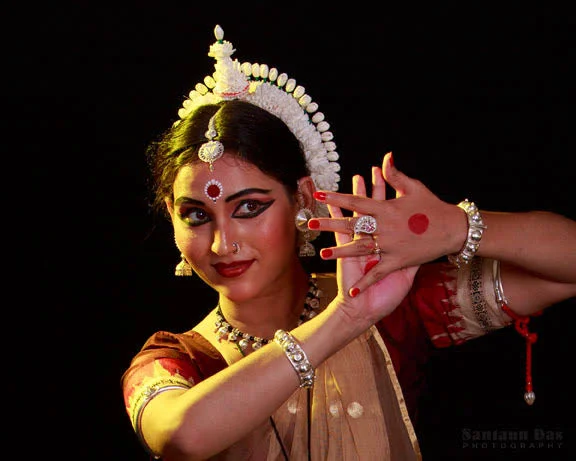
The magnificent costumes and attitudes that dancers wear while performing is the most obvious reason for the uniqueness of this dance form. The visual, like the dancing style, is enthralling in itself. Dancers use sarees in bright colours like purple, orange, green, and red, with traditional borders that have exquisite embroidery work and some dazzling ornaments to make them stand out.
Sambalpuri and Bomkai sarees are the two most popular sarees for this dance. Furthermore, the bulk of the jewellery is silver rather than gold, which adds to the appeal of the dancing style. Finally, the waistband is also a must-have.
Famous Faces Of Odissi Dance
Kelucharan Mohapatra, Raghunath Dutta, Deba Prasad Das, Pankaj Charan Das, and Gangadhar Pradhan are among the Odissi maestros who revitalised the art form in the late 1940s.
Also, Guru Mayadhar Raut‘s contribution was important in the dance form acquiring classical classification.
Sanjukta Panigrahi, Sonal Mansingh, and Kumkum Mohanty were disciples of Kelucharan Mohapatra, as were Aruna Mohanty, Anita Babu, and Aadya Kaktikar, to name a few.
Global Recognition
In 2011, Guinness World Records recognized an Odissi performance as the ‘World’s Largest Odissi Dance’. This record was set by 555 dancers who put on a stunning show at the Kalinga Stadium in Bhubaneswar, Orissa. It was one of the most awe-inspiring performances ever seen. It helped to establish another milestone for this dance style in the greater sphere of Indian culture and tradition.

Furthermore, on March 12, 2016, almost 1000 Odissi dancers performed at the World Cultural Festival, making it the largest assembly of Odissi dancers at a single event. The Oxford Odissi Centre is a new Odissi dance centre at the University of Oxford. Baisali Mohanty is behind this effort who is also an Odissi dancer and choreographer and a post-graduate scholar at the University of Oxford.
The Oxford Odissi Centre provides regular classes in Oxford as well as Odissi dance workshops at other UK universities. Apart from that, people all around the world have become enamoured with the dance style and are performing it, propelling it to new heights
Sutra Foundation, Gandharva Mahavidyalaya, Odissi Vision and Movement, Nrityagram, Rudrakshya Foundation, Orissa Dance Academy, and Srjan are some of the travelling Odissi ensembles currently functioning.
Final Thoughts
Does it not make it very overwhelming to have all these complex mechanisms fit into one performance? This is a mechanism that allows dancers to interact with their souls and express what is too profound to explain in words, but it also allows the audience to experience catharsis. To find the deeper meaning of life by attaining spiritual enlightenment and establishing a connection with God.
Also, did you know that Odissi is the only Indian Classical Dance to be filmed in Michael Jackson’s music video Black and White in the year 1991?
With flowing movements, sculptured stances, and exquisite rhythm, Odissi is the ideal of fluid grace, lyrical beauty, sculptural sensuality, and deep spirituality. As a result, this poetic show, which is accompanied by beautiful music, throws a spell on onlookers.
Finally, this dance form has the power to impart meaning and beauty to the audience while also provoking emotions. It continues to draw audiences from all around the world as a dance genre that conveys life through movement.
Podium School provides a wide range of classical dance lessons, including Bharatnatyam and Kathak. At Podium School, we encourage our students to learn a variety of dance forms. We also provide private classes for children.
Keep visiting our blog for more updates!
FAQ Section
Why is Odissi dance famous?
The stories of Vishnu’s eighth incarnation, Lord Krishna, are depicted in Odissi, which borrows most of its subjects from Jayadeva’s “Geeta Govinda.” It’s a lyrical, delicate classical dance. Odisha and its cultural effects are rapidly receiving national and international attention.
How would you describe the movement of Odissi?
Odissi centres stylistically around the Tribhanga as the central stance. The head, torso, and lower body move in deflection, with each section moving in opposition to the one above, resulting in a figure with three bends to its shape. Odissi is peculiar in that it makes use of sideways movement in the body.
Who is the God of Odissi?
Lord Jagannath, Odissi’s major god, is represented by the square posture of Chowka and the S-shaped Tribhangi, three bends of the body at the head, torso, and knees.
Is Odissi a religious dance?
Odissi began as a sacred ceremony performed by young and attractive temple dancers known as Maharis. Its religious tenets keep it connected to its roots to this day. Odissi, according to the Natya Shastra, is the inspired expression of water’s basic nature.
Who is the father of Odissi dance?
Adi Guru Pankaj Charan Das is widely regarded as the “Father of Odissi Dance.” He was the adoptive son of Ratna Prabha Devi, a mahari (temple dancer), from whom he learned the skill of devotional movement.
What is Pallavi in Odissi dance?
Pallavi is also a basic dance and suggests elaboration; an exhibition not just of the dance but also of the music that goes with it. A fast-paced, pure dancing routine is done to the accompaniment of a recital of rhythmic words played on the Mardala (the main percussion instrument in Odissi).
Share with your friends
